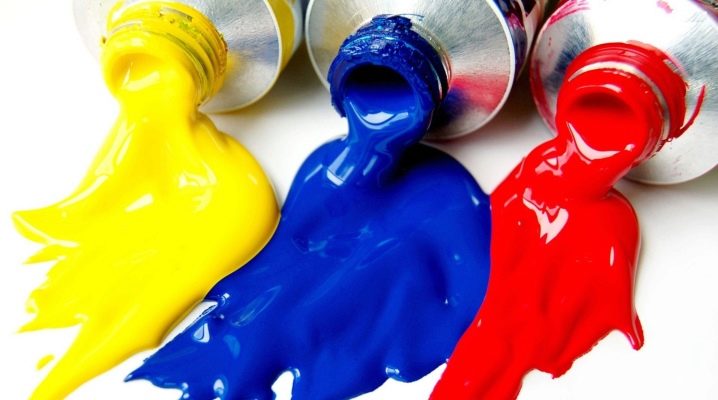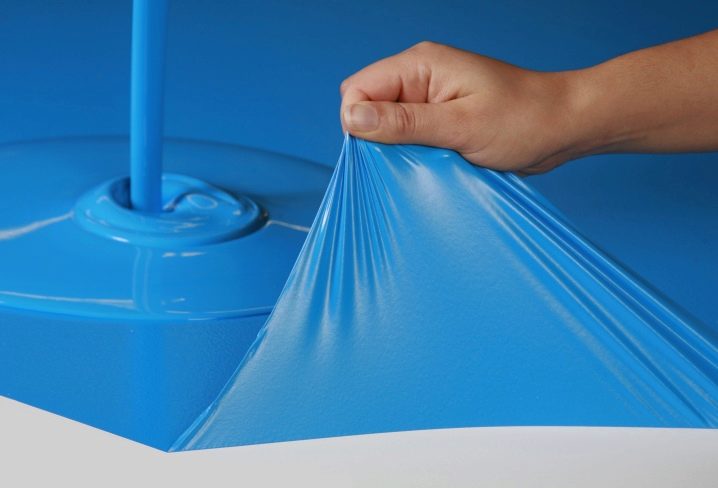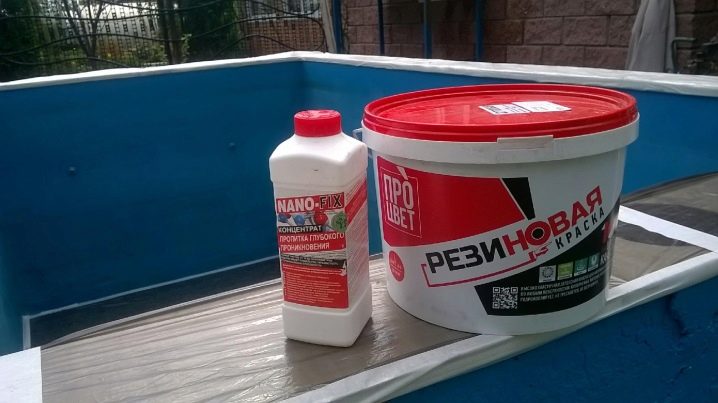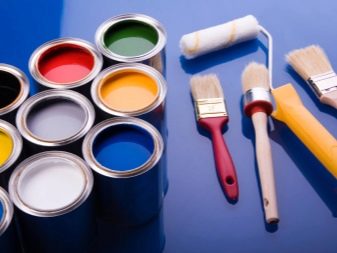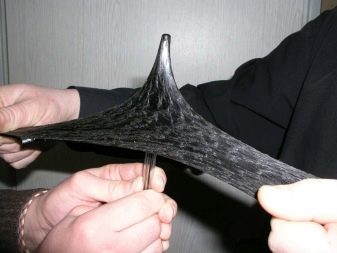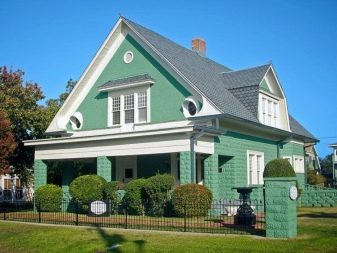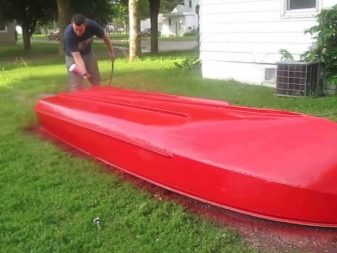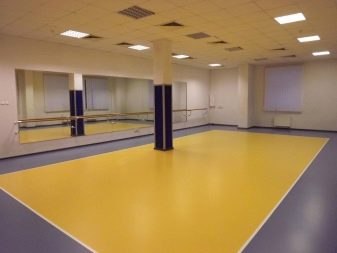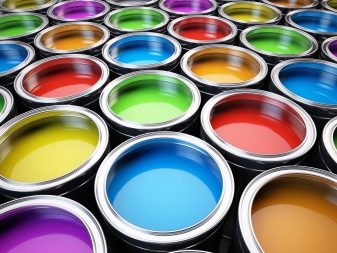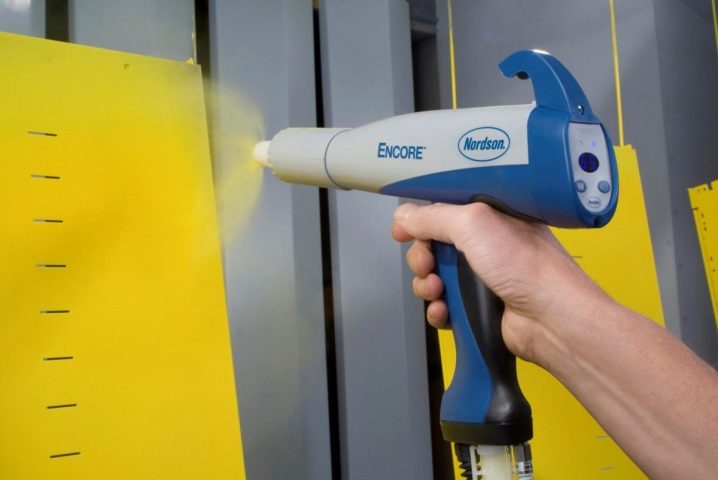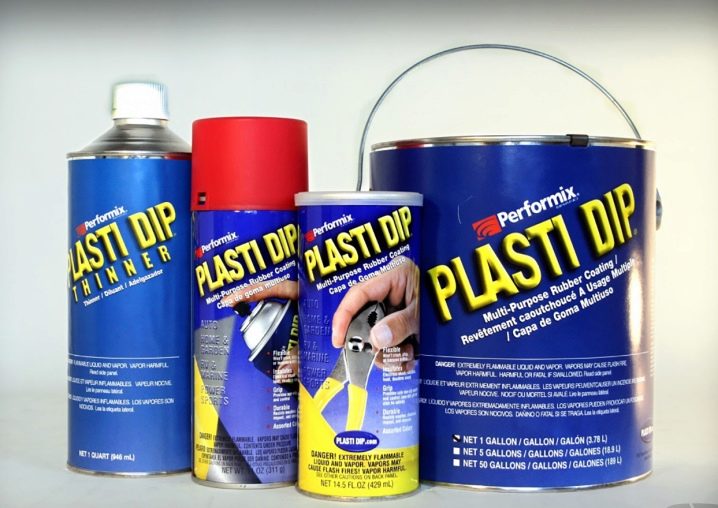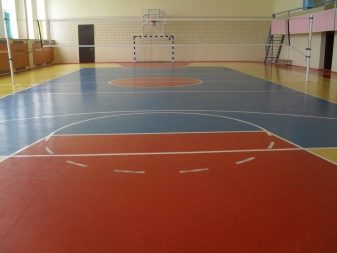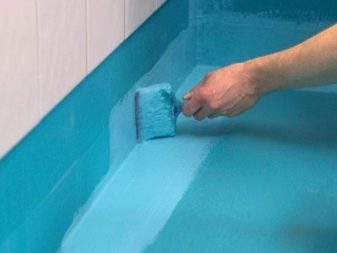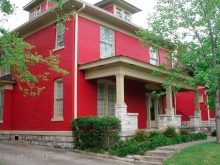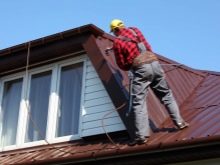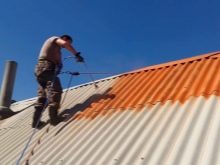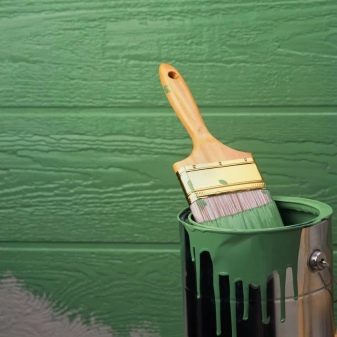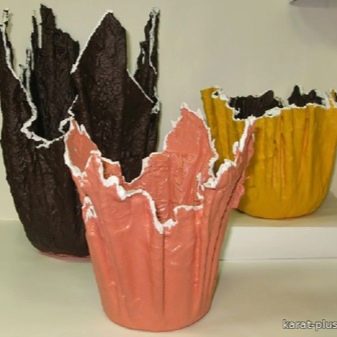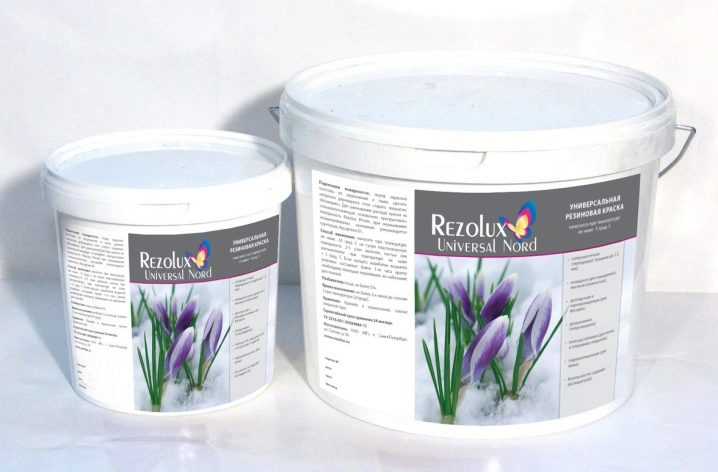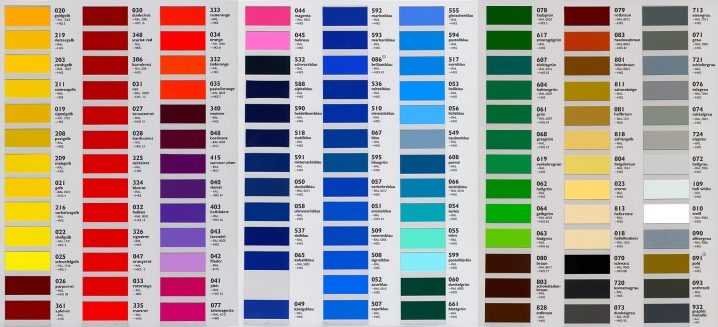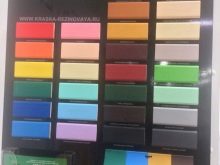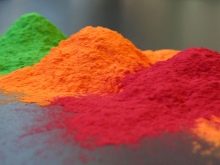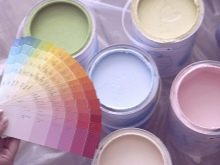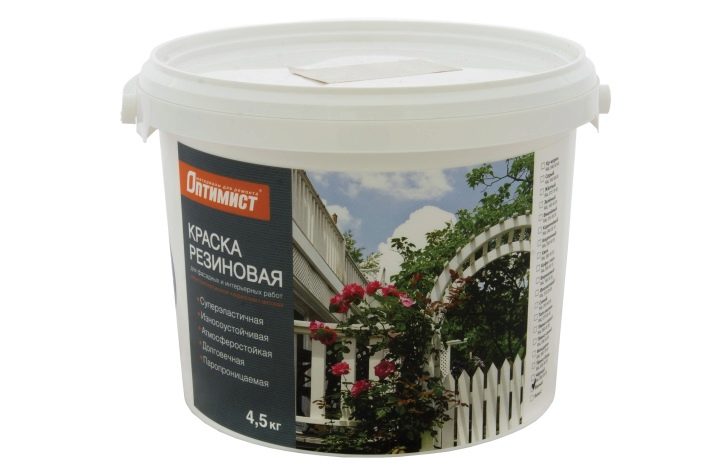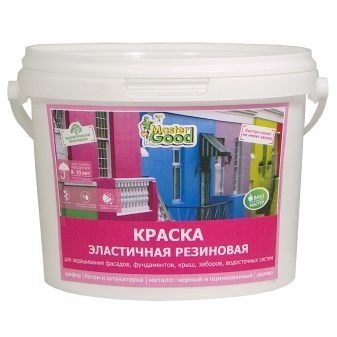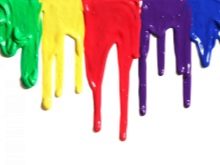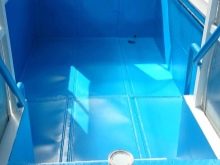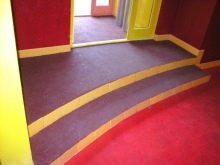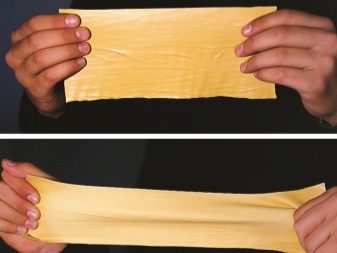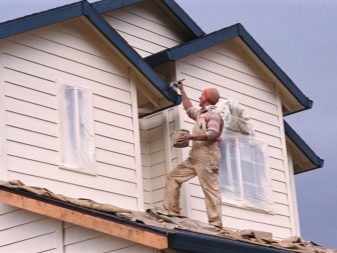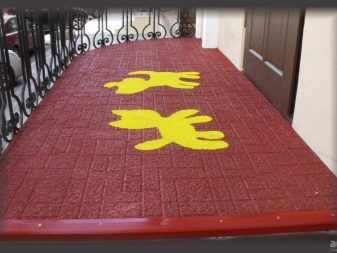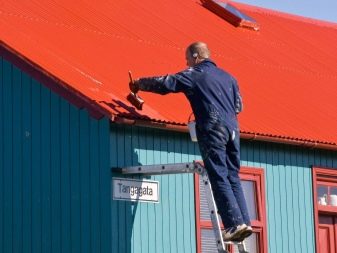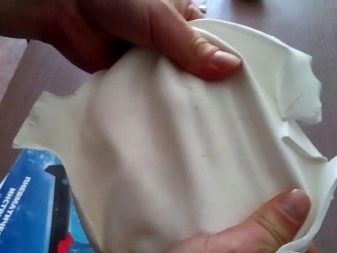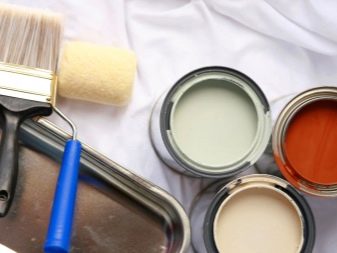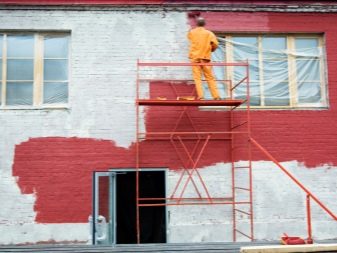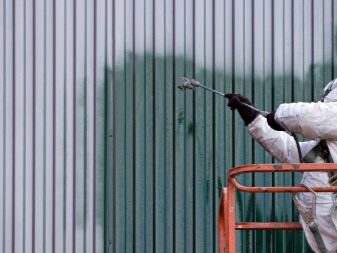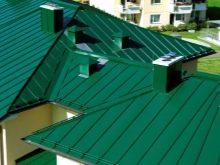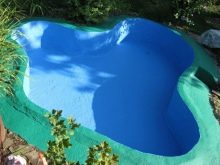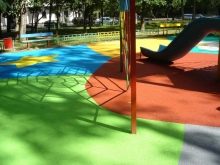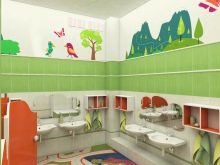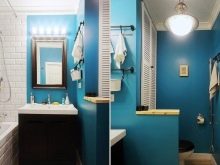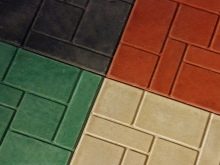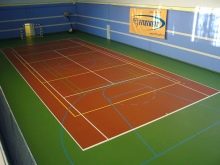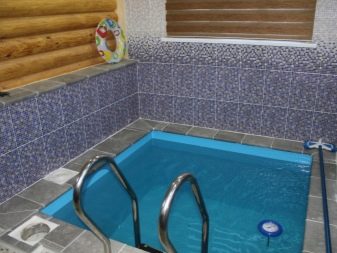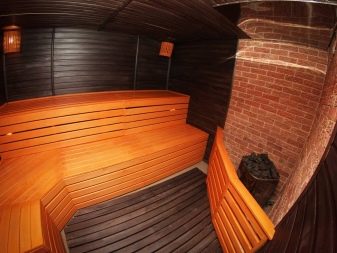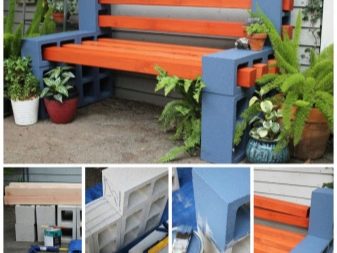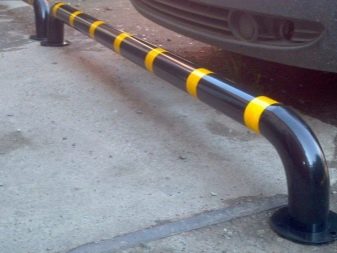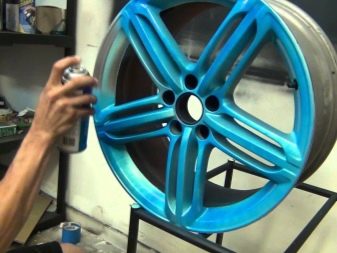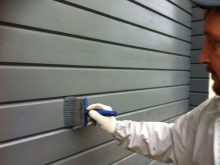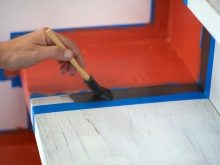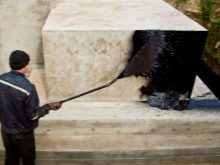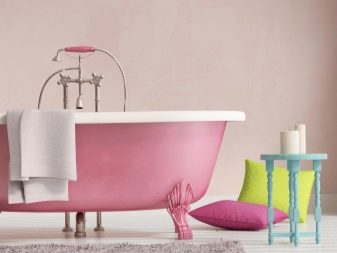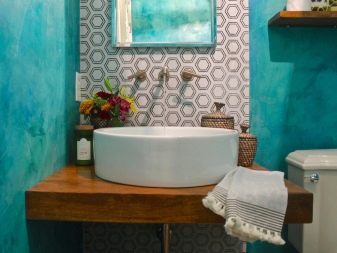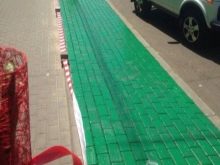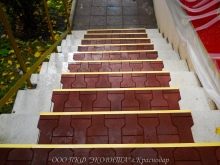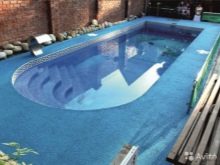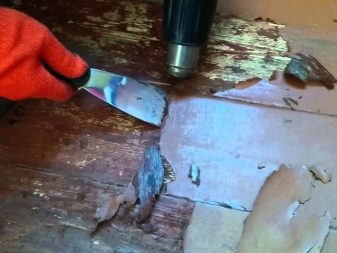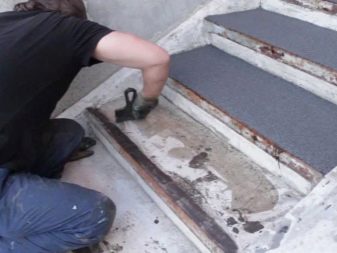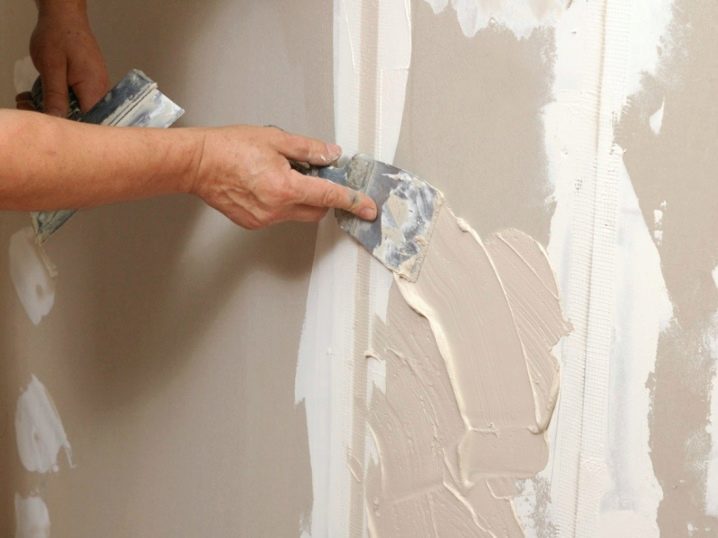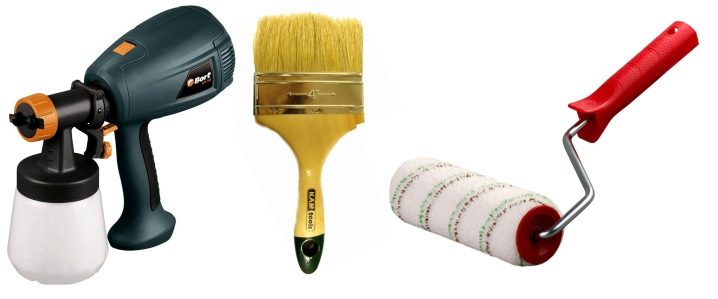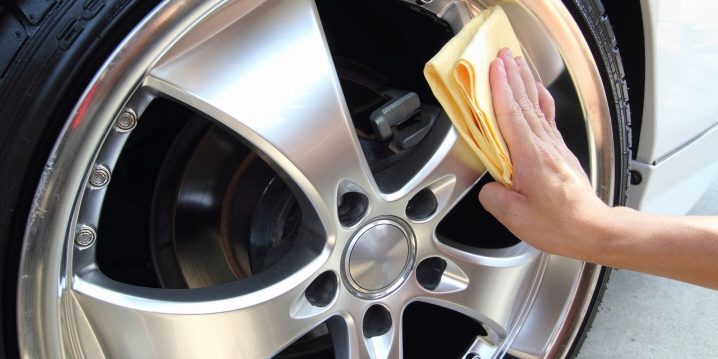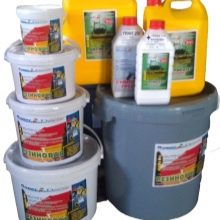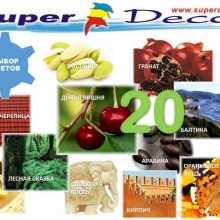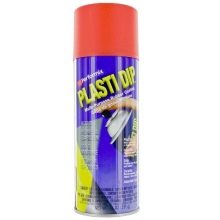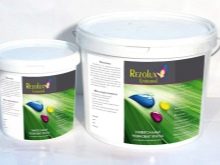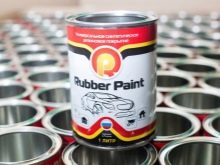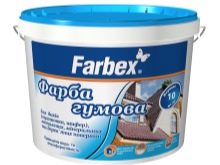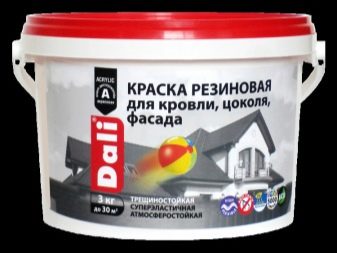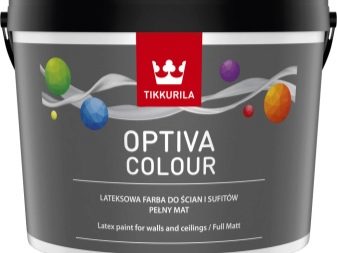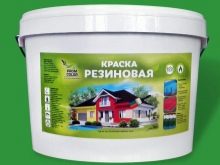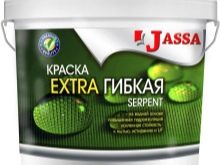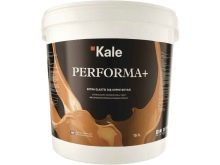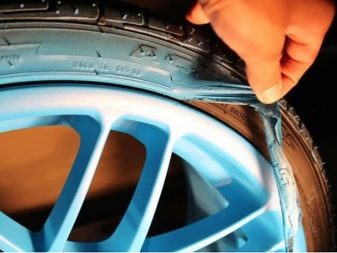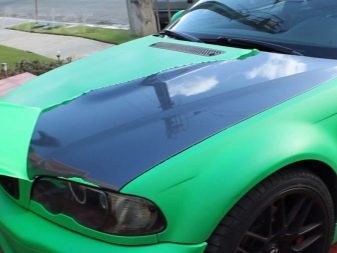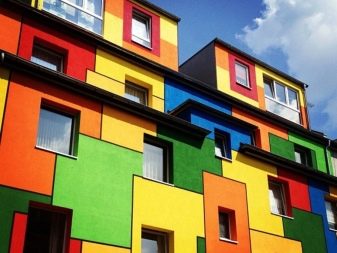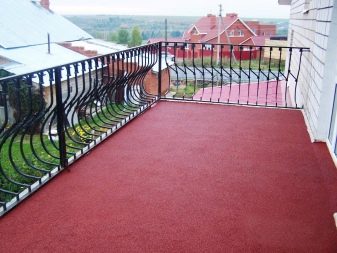Rubber paint: all the details of the choice and application
Rubber paint is a paint-and-lacquer agent on a polymeric water-acrylic base with the content of various synthetic components causing excellent mixture performance. The main feature is the absence of a solvent in the composition, which makes the dye non-toxic, without a specific unpleasant smell. This difference allows paint work in poorly ventilated areas without a threat to health. It is characterized by ease of handling and is used on almost any type of surface. Although paint is called rubber, it does not contain this component. The fact is that when it hardens, it forms an elastic soft coating, externally similar to rubber.
The basic composition of rubber paint includes such substances:
- latex, giving the composition strength and ductility;
- water - a binder component (about 5%);
- coalescent, responsible for the formation of the film;
- preservative, giving the solution antiseptic properties;
- antifreeze, providing frost resistance;
- additives in the form of pigments and other additives that are responsible for various properties, including color.
Features: advantages and disadvantages
The main positive qualities of rubber paint include the following:
- used for both internal and external works, can be used to paint the car;
- has excellent adhesion, adheres tightly to the working surface at the molecular level;
- it is applied on various types of surfaces: metal, wood, concrete, plastic and other;
- for work does not require a special tool, applied with a brush, roller, spray gun or other method;
- seizes quickly and hardens;
- the warranty period without disturbing the texture for the painted surface is 10 years;
- the surface layer is elastic, does not collapse due to stretching during heating and compression during cooling;
- resistance to mechanical stress and vibration without consequences for the structure of the coating;
- resistance to temperature changes and direct exposure to ultraviolet rays, does not fade and does not tarnish;
- the paint is waterproof and completely prevents the penetration of water through the painted layer;
- a wall painted with such paint “breathes”, which, firstly, does not interfere with air circulation and, as a result, the room does not become stuffy, and secondly, moisture does not accumulate in the wall, therefore it does not dampen;
- forms a rough surface. This quality is advisable when painting floors, especially in places where children play;
- clear instructions for use;
- substances that are part of the paint, do not have a toxic effect on health, for example, as the evaporation of other types of paint;
- relatively affordable price category. When taking into account the service life and positive qualities of this paint is more profitable than acrylic and vinyl dyes with similar qualities.
Negative features include:
- strict requirements for compliance with the technology of painting, especially for the preparation of the working surface;
- If the paint is applied in a thick layer, then it is likely to peel off.
Kinds
Wear-resistant waterproofing rubber paint can be produced, for example, in cans, liquid, have the effect of flicker, with crumb, etc. It is often used rubberized spray paint. This aerosol is very convenient to use.
Rubber paint fits well on various types of surfaces, for example:
- concrete and brick;
- metal, including galvanized;
- slate;
- wooden;
- plastic;
- gypsum and other.
Volume
Rubber paint is sold as a ready-made mortar in buckets. with the following packaging options in terms of tare / weight:
- 1 l / 1.2 kg;
- 2.5 L / 3.5 kg;
- 4 l / 6 kg;
- 8.5 l / 12 kg;
- 30 l / 40 kg.
Colors
Available rubber paint in the following colors:
- white;
- blue
- light green;
- beige;
- yellow;
- blue;
- brick;
- green
- cherry
- black and other colors.
If necessary, the color can be changed by adding a coloring additive - pigment.
How to choose?
Extremely resistant paint must be chosen carefully.
When choosing a rubber paint should consider a number of features:
- For work on what type of surface dye is chosen.In addition to the standard set of components, additives that enhance various properties can be included in rubber paint. So, a variant with an increased antiseptic content would be appropriate when working on wood and useless on a metal surface.
- Certificate of quality. Rubber paint has a complex composition and must be produced according to the established technology. Counterfeit and hand-made products are very different from the standardized mixture for the worse.
- Shelf life. Any mixture has a strictly limited time to use before becoming unusable. This time interval varies depending on the presence in the composition of special additives.
Properties and application
We can distinguish the following properties of the composition:
- Adhesion. Acrylic base molecules penetrate into the structure of the surface substance and ensure their reliable adhesion. This property allows you to effectively apply rubber paint on all types of surfaces.
- Flowability This property causes a uniform distribution of paint on the working surface with the alignment of defects of different levels and the creation of a smooth canvas.
- Thermoplasticity. Provides resistance to temperature changes without loss of positive qualities, changes in the composition of the mixture and the destruction of the hardened layer. The permissible temperature range is from about -50 ° C to + 70 ° C.
- Vapor permeability Provides gas exchange in the painted surface, allows moisture to evaporate. As a result, the walls "breathe", the treated material does not dampen and does not collapse.
- Plastic. The hardened layer withstands multiple stretching without destroying the integrity, and the “memory” of the material provides a return to the original form.
- Water resistance. The painted surface has a high waterproofing, protected from corrosion.
- Rapid hardening. Reduces the time for finishing work. The setting speed of the layer is approximately 2 hours depending on the specific composition.
- UV resistant.
- Slip reduction. The surface of the hardened layer is rough, which causes a wide range of application of rubber paint on surfaces moistened with water, thus reducing the trauma of a certain area.
- Ease of use. Paint is applied with the help of any profile tool; it does not require special skills to work.
- Strength. Hardened layer is highly resistant to mechanical stress, vibration, and some subspecies, and to intense friction.
- Environmental friendliness. The absence of a solvent in the paint, as well as inert components, cause its non-toxicity. Also, the dye does not emit an unpleasant irritating smell.
Application
The scope of use of rubber paint may differ in the place of its use:
- For facade work. Rubber dye is an excellent choice if you need to update the appearance of the building, and its properties allow the use of the ence of brick, concrete and stone walls of houses, in addition, this choice of facing favorably differs financially.
- For painting various home barrier. The main fence around the perimeter or small dividing structures inside the site, painted with rubber paint, will improve the aesthetic appearance and will receive complete protection from the negative influence of the environment.
- Roofs of various types of materials, such as slate or galvanized steel. Slate roofs painted with rubber paint look good, their lifespan significantly increases due to the protective properties of the dye, and asbestos dust stops falling into the air, remaining under a strong layer of dye.Galvanized roofs will receive excellent protection against corrosion, in addition, galvanized is one of the best surfaces for applying rubber paint. The hardened layer does not fade and does not slazit from direct exposure to sunlight.
- Pool or artificial lake. Rubber paint is great for waterproofing small ponds.
- Objects for children's pastime. The absence of solvent and inert components make rubber paint completely non-toxic, which is especially appropriate in children's institutions, for example, kindergartens and schools, as well as in recreation areas, for example, in playgrounds, game rooms, etc.
- Bathrooms and kitchens. Places with constantly changing humidity and temperature changes set specific requirements for the paintwork, which rubber paint fully meets both on the moisture resistance side and resistance to temperature changes, including the expansion of painted surfaces without destroying the painted layer.
- Paving slabs. Covered with rubber paint, this path will be protected from the negative impact of environmental factors, plus the surface will not be slippery, which is a significant advantage both in rainy weather and during light glaciation.At the same time the paving slabs will find pleasant appearance and for many years will serve, without demanding replacement.
- Sports objects. For these places, the property of rubber paint to resist the mechanical impact, reduce the surface slip. A pleasant appearance of a treadmill or a tennis court will cheer up not only athletes, but also spectators. It is important choosing a paint, opt for a material with high resistance.
- Steam baths. In rooms of this kind moisture resistance and non-toxicity play an important role in the selection of finishing materials.
- Protection of small structures, such as gazebos, verandahs, terraces, benches, picnic areas and other outbuildings.
- Update the look of small items. Rubber paint can be used to give a second life to old furniture, various interior items and other things.
By surface material:
- Painting rough surfaces. Rubber paint fits well on plastered and plastered walls, drywall, on top of pasted vinyl and non-woven wallpaper for painting, plaster, polypropylene, polyurethane foam surface, chipboard, fiberboard and other wood boards.
- Various metal surfaces.Processing are subject to products such as rims, and various containers, doors, rails and any other objects made of metal.
- Wood. To use rubber paint to paint wooden objects is primarily advisable because of its protection against moisture. Even if the moisture gets through any hole, the swollen tree will not destroy the painted surface due to the unique elasticity of the dye, which can expand several times in a frozen form. And vapor permeability will allow to dry the painted surface.
- Concrete surfaces. By virtue of their specificity, soak up moisture, concrete can become a source of dampness and fungal mold, and rubber paint completely solves this problem due to its high moisture resistance. Moisture that has entered the concrete from the unpainted side will evaporate at a positive temperature due to good vapor permeability, so the wall or floor can be easily “dried” under the influence of positive temperature.
Negative impact:
- Application in places with high humidity. One of the strongest advantages of rubber paint is its moisture resistance,combined with good adhesion with any type of surface.
- Coloring in closed or poorly ventilated areas. Since there is no solvent in the paint, its use is possible in conditions in which other types of dyes can be used only in special protection. This, in particular, carrying out paint work in the winter, in rooms without windows, for example, basements, places with poor ventilation, etc.
- Reduced slip surfaces. In various situations, when moisture gets on the floor, it becomes slippery, for example, the space around the pool, canopies, ramps, sloping pedestrian areas during rain, etc.
- Crack prevention. Any surfaces of various materials that are under a specific negative impact can be painted with rubber paint. It resists mechanical loads well and partially dampens vibrations, which in many respects contribute to the formation of cracks.
- Application in places with a constant temperature difference. Due to its elasticity, rubber paint can expand without destroying the integrity of the surface, and then shrink without forming stretch marks, for example, near stove equipment, a gas stove, fireplaces, a roof in the sun, etc.
Tips and tricks
The main factor in the durability of the coating is full compliance with the application technology. Proper preparation of the working surface - a critical moment in working with rubber paint. If you do not follow strict rules, despite all the excellent performance, the coating will quickly become unusable.
To obtain a high-quality surface layer of rubber paint, you must perform the following steps:
- Cleaning up All excess substances such as dirt, rust, dust, fungal mold, previous finishing coating should be removed from the working surface. Also before starting it is necessary to degrease materials with a smooth surface: metal, plaster, plastic and others.
- Elimination of major defects. If there are small cracks on the surface, this is not essential, but with large ones it is worth sorting out separately. You can apply putty or other appropriate means. It is also worth polishing any protrusions, otherwise they will affect the finished layer. If the surface is very smooth, for example, glossy, to improve the adhesion of paint, you need to rub the surface with a large sandpaper, and then wash the surface with dissolved baking soda.
- Additional protection.Depending on the type of surface and its specificity, additional cleaning, priming, treatment with antiseptic, antipyretic or other substances may be carried out after cleaning to give the material the desired qualities.
- Application tool. Rubber paint is applied with a spray gun, roller or brush.
- Specific application of the layer. It is necessary to apply paint in 2-3 thin layers, since when applying one layer there is a high probability of peeling the entire coating. The next layer is applied only after complete drying of the previous one, on average it is 1.5-2 hours. The finish layer dries from 2 to 3 hours, but some manufacturers recommend waiting for about a day. This indicator also varies from external factors: humidity and air temperature.
General recommendations for working with rubber paint:
- the temperature of the room in which the work is performed must not be below + 5 ° C;
- after the opening of the container with the dye and the start of painting it is recommended to periodically stir the solution, this will ensure a uniform consistency and, as a result, a uniform color of the coating;
- it is not recommended to carry out coloring in the open air in windy weather, and also in rooms with existence of a draft,such phenomena may contribute to the formation of "waves" on the surface of the coating;
- It is recommended to wash the painted surface with the use of detergents at least 7 days after application;
- the solution should be stored in a room with a temperature not lower than 0 ° C, short-term freezing to -20 ° C is possible, for example, during transportation, but after that the mixture should stand for 24 hours at a temperature of about + 25 ° C;
- You can not apply paint to the surface of burnt lime - the paint will simply fall off.
Manufacturers and reviews
An important step in the selection of rubber paint is the choice of a particular manufacturer of the mixture. Thus, solutions with a similar purpose and composition, produced in different plants, will have their own specifics and exhibit similar qualities, but with some differences.
Rubber paint is made by many companies from different countries, and here are some of them:
- Super Decor (Russia);
- lasti dip (us);
- Rezolux Universal (Russia);
- Rubber Paint (China);
- Farbex (Ukraine);
- Dali (Russia);
- Tikkurila (Finland);
- Jassar (United States);
- Promcolor (Russia);
- Kale (Turkey).
According to customer reviews, the products of the above companies dries quickly, it fits well, it is easy to use, it does not need a solvent, it does not fade in the sun.
Among the shortcomings they note the need for thorough, scrupulous pre-cleaning of the surface. Paint the surface on the street is only in sunny weather.
Successful examples and options
Rubber paint is most often used for painting cars. This is a very durable substance that has a rich color.
Rubber paint is also used for exterior work. It is resistant to temperature and high humidity.
Remove unnecessary residues of the coloring matter is very simple.
How to paint the pool with rubber paint, see the following video.
